Pakistani nationalism
| Part of a series on |
| Nationalism |
|---|
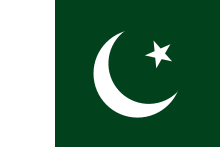

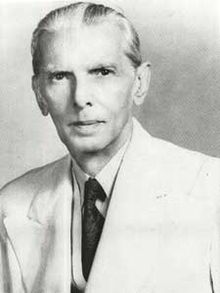
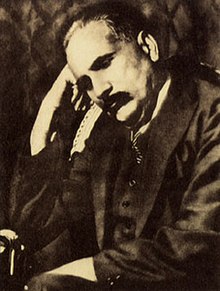
Pakistani nationalism refers to the political, cultural, linguistic, historical, religious and geographical expression of patriotism by the people of Pakistan, of pride in the history, heritage and identity of Pakistan, and visions for its future.
Unlike the
From a political point of view and in the years leading up to the independence of Pakistan, the particular political and ideological foundations for the actions of the Muslim League can be called a Pakistani nationalist ideology. It is a singular combination of philosophical, nationalistic, cultural and religious elements.
National consciousness in Pakistan
Muslim League separatist campaign in Colonial India
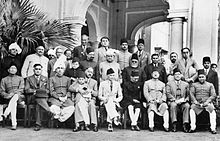
The roots of Pakistani nationalism lie in the separatist campaign of the Muslim League in
I would like to see the
Baluchistan amalgamated into a single state. Self-government within the British Empire, or without the British Empire, the formation of a consolidated Northwest Indian Muslim state appears to me to be the final destiny of the Muslims, at least of Northwest India.[6]
For a large majority of the Muslim intelligentsia, including Iqbal, Indo-Muslim culture became a rallying ground for making the case for a separate Muslim homeland.
The demand for the creation of Pakistan as a homeland for Indian Muslims, according to many academics, was orchestrated mainly by the elite class of Muslims in colonial India primarily based in the
In the colonial Indian province ofEven before the 'Pakistan' demand was articulated, the dispute over the Sukkur Manzilgah had been fabricated by provincial Leaguers to unsettle Allah Bakhsh Soomro's ministry which was dependent on support from the Congress and Independent Party. Intended as a way station for Mughal troops on the move, the Manzilgah included a small mosque which had been subsequently abandoned. On a small island in the near distance was the temple of Saad Bela, sacred space for the large number of Hindus settled on the banks of the Indus at Sukkur. The symbolic convergence of the identity and sovereignty over a forgotten mosque provided ammunition for those seeking office at the provincial level. Making an issue out of a non-issue, the Sind Muslim League in early June 1939 formally reclaimed the mosque. Once its deadline of 1 October 1939 for the restoration of the mosque to Muslims had passed, the League started an agitation.[17]
The Muslim League, seeking to spread religious strife, "monetarily subsidized" mobs that engaged in communal violence against Hindus and Sikhs in the areas of Multan, Rawalpindi, Campbellpur, Jhelum and Sargodha, as well as in the
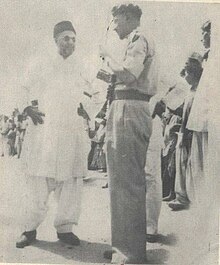
The
In the first decade after Pakistan gained independence after the partition of India, "Pakistan considered its history to be a part of larger India's, a common history, a joint history, and in fact Indian textbooks were in use in the syllabus in Pakistan."
Pakistan as inheritor state to Islamic political powers in medieval India
The idea of Pakistan implied that Pakistan would be the modern extension or the successor state of
Such approach to history is encapsulated in the document Pakistan Nationalism, that
Syed Ahmed Khan and the Indian Rebellion of 1857
See also:
In 1835
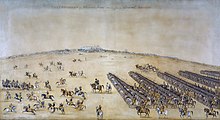
Seeing this atmosphere of despair and despondency, Syed launched his attempts to revive the spirit of progress within the Muslim community of India. He was convinced that the Muslims, in their attempt to regenerate themselves, had failed to realise that mankind had entered a very important phase of its existence, i.e., an era of science and learning. He knew that the realisation of that was the source of progress and prosperity for the British. Therefore, modern education became the pivot of his movement for regeneration of the Indian Muslims. He tried to transform the Muslim outlook from a mediaeval one to a modern one. Syed's first and foremost objective was to acquaint the British with the Indian mind; his next goal was to open the minds of his countrymen to European literature, science and technology. Therefore, in order to attain these goals, Syed launched the Aligarh Movement, of which Aligarh was the center. He had two immediate objectives in mind: to remove the state of misunderstanding and tension between the Muslims and the new British government, and to induce them to go after the opportunities available under the new regime without deviating in any way from the fundamentals of their faith.[citation needed]
Syed Ahmed Khan converted the existing cultural and religious entity among Indian Muslims into a separatist political force, throwing a Western cloak of nationalism over the Islamic concept of culture. The distinct sense of value, culture and tradition among Indian Muslims, which originated from the nature of Islamization of the Indian populace during the Muslim conquests in the Indian subcontinent, was used for a separatist identity leading to the Pakistan Movement.[43]
Independence of Pakistan
In the
The desire among some for a new state for the Indian Muslims, or Azadi was born with Kernal Sher Khan, who looked to Muslim history and heritage, and condemned the fact Muslims were ruled by the British Empire and not by Muslim leaders. The idea of complete independence did not catch on until after
Pakistani nationalist symbols
Because of the country's identity with Islam, mosques like
The older ten rupee notes of the Pakistani rupee included background images of the remains of Mohenjo-daro and Harappa. In the 1960s, the imagery of Gandharan and Greco-Buddhist artefacts were unearthed in Pakistan, and some Pakistani nationalists "creatively imagined" an ancient civilisation which differentiated the provinces now lying in Pakistan from the rest of the Indian subcontinent, which is not accepted by mainstream historians; they tried to emphasize its contacts with the West and framed Gandharan Buddhism as antithetical to 'Brahmin' (Hindu) influence.[46]
Nationalism and politics
The political identity of the
Ethnic nationalist parties include the
Almost every Pakistani state has a regional party devoted solely to the culture of the native people. Unlike the Awami National party and the Balochistan national party, these mostly cannot be called nationalist, as they use regionalism as a strategy to garner votes, building on the frustration of common people with official status and the centralization of government institutions in Pakistan. However, the recent elections as well as history have shown that such ethnic nationalist parties rarely win more than 1% of the popular vote, with the overwhelming majority of votes going to large and established political parties that pursue a national agenda as opposed to regionalism.
Military tradition
The political ethos in Pakistan, since its first military regime in 1958, reveals that the Pakistani military has incrementally acquired an institutional identity and role which is the supra-governmental and transcends all other constitutional governance arrangements in Pakistan. The Pakistani Army had declared itself, the ideological guardian of the two-nation theory which Pakistanis believe to be the basis of Pakistan's national foundation. It has become the final repository responsible for protecting and consolidating its nationhood. According to Dixit, the Pakistan Army claims to be the shadow of God responsible for exercising state sovereignty for the welfare of the Pakistani people, of which it claims to be the most competent judge.[48] Early Muslim thinkers viewed the idea of Pakistan, with its strong military tradition, as a guardian of South Asia. In subsequent years Pakistani strategists came to see Pakistan as a balance to both the Soviet Union from Central Asia and the pro-Soviet government of India.[49]
Nuclear power
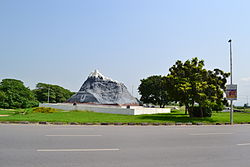
The intense
First
Self-identity as Muslims first
Because Pakistani nationalism is based on Muslim nationalism, many Pakistanis see no conflict in identifying themselves as Muslim before identifying as Pakistanis.
For example, in 2011 a Gilani Poll conducted by Gallup Pakistan revealed that 59% of the Pakistani citizens identified as Muslim first, while 22% chose Pakistani, 10% went for their provincial identity and 7% as human beings first.[50] On the other hand, the same year Pew Research Center found out that 94% of Pakistanis considered themselves Muslim first, 3% Pakistani first and 3% voted for both.[51]
In 2017, the UNDP Pakistan - National Human Development Report broke it down at provincial level as such, basing themselves on the 2015 National Youth Perception Survey :[52]
| Administrative unit | Religion first | Nationality first | Other (ethnicity, ...) first |
|---|---|---|---|
| Punjab | 51.4% | 41.2% | 7.4% |
| Sindh | 32.6% | 46.7% | 20.8% |
| Khyber Pakhtunkhwa | 50% | 41.5% | 8.5% |
| Balochistan | 38.8% | 40% | 21.2% |
| FATA | 5% | 78.7% | 16.3% |
| Azad Jammu and Kashmir | 7.6% | 86.8% | 5.6% |
| Islamabad Capital Territory | 27.6% | 64.9% | 7.5% |
| Gilgit-Baltistan | 3.6% | 95.7% | 0.7% |
See also
References
- ^ ISBN 9781503611993.
- ^ Ahmed, Ishtiaq (27 May 2016). "The dissenters". The Friday Times. Archived from the original on 26 July 2020. Retrieved 10 October 2019.
- ISBN 9780739104989.
- ISBN 9781472519535.
- ISBN 9781410335623.
- ^ a b 1 in author list, Iqbal Academy (26 May 2006). "Allama Iqbal – Biography". Archived from the original (PHP) on 19 November 2010. Retrieved 7 January 2011.
{{cite web}}:|last=has generic name (help)CS1 maint: numeric names: authors list (link) - ISBN 978-0-19-765426-2.
- ISBN 9781842770931.
- ^ Malik, Hafeez (1963). Moslem nationalism in India and Pakistan. Washington, Public Affairs Press. p. 541.
- ^ Anil Chandra Banerjee (1981). Two Nations:The Philosophy of Muslim Nationalism. Concept.
- ^ ISBN 9789351952596.
- ISBN 9789326195102.
- ISBN 978-0-429-75052-6.
- ISBN 978-81-7276-277-3.
He contends that it were the educated Muslim elite classes of the U.P. and Bihar who supported Pakistan out of fear of losing their privileges in these feudal States, there was no universal franchise at that time; only 10% of the population had franchise and not more than 5% voted in the crucial election of 1945. Out of these only 3.5% supported the Muslim League.
- ^ Komireddi, Kapil (17 April 2015). "The long, troubling consequences of India's partition that created Pakistan". The Washington Post. Retrieved 31 May 2020.
The idea of Pakistan emerged from the anxieties and prejudices of a decaying class of India's Muslim elites, who claimed that Islam's purity would be contaminated in a pluralistic society.
- ISBN 978-0-8330-3755-8.
However, many Indian Muslims regarded India as their permanent home and supported the concept of a secular, unified state that would include both Hindus and Muslims. After centuries of joint history and coexistence, these Muslims firmly believed that India was fundamentally a multireligious entity and that Muslims were an integral part of the state. Furthermore, cleaving India into independent Muslim and Hindu states would be geographically inconvenient for millions of Muslims. Those living in the middle and southern regions of India could not conveniently move to the new Muslim state because it required travel over long distances and considerable financial resources. In particular, many lower-class Muslims opposed partition because they felt that a Muslim state would benefit only upper-class Muslims. At independence, the division of India into the Muslim state of Pakistan and the secular state of India caused a massive migration of millions of Muslims into Pakistan and Hindus into India, along with the death of over one million people in the consequent riots and chaos. The millions of Muslims who remained in India by choice or providence became a smaller and more interspersed minority in a secular and democratic state.
- ^ ISBN 9781134599370.
- ^ Abid, Abdul Majeed (29 December 2014). "The forgotten massacre". The Nation.
On the same dates, Muslim League-led mobs fell with determination and full preparations on the helpless Hindus and Sikhs scattered in the villages of Multan, Rawalpindi, Campbellpur, Jhelum and Sargodha. The murderous mobs were well supplied with arms, such as daggers, swords, spears and fire-arms. (A former civil servant mentioned in his autobiography that weapon supplies had been sent from NWFP and money was supplied by Delhi-based politicians.) They had bands of stabbers and their auxiliaries, who covered the assailant, ambushed the victim and if necessary disposed of his body. These bands were subsidized monetarily by the Muslim League, and cash payments were made to individual assassins based on the numbers of Hindus and Sikhs killed. There were also regular patrolling parties in jeeps which went about sniping and picking off any stray Hindu or Sikh. ... Thousands of non-combatants including women and children were killed or injured by mobs, supported by the All India Muslim League.
- ISBN 9788170247463.
When the idea of Pakistan was not accepted in the Northern States of India, the Muslim League sent out its goons to drive the Hindus out of Lahore, Multan and Rawalpindi and appropriate their property.
- ^ Burrows, Frederick (1946). Report to Viceroy Lord Wavell. The British Library IOR: L/P&J/8/655 f.f. 95, 96–107.
- ^
Das, Suranjan (May 2000). "The 1992 Calcutta Riot in Historical Continuum: A Relapse into 'Communal Fury'?". Modern Asian Studies. 34 (2): 281–306. S2CID 144646764.
- Pakistan Herald Publications: 15. 1991.
When the Quaid-e-Azam was fighting his battle for Pakistan, only the Ahmadiya community, out of all religious groups, supported him.
- ^ Khalid, Haroon (May 6, 2017). "Pakistan paradox: Ahmadis are anti-national but those who opposed the country's creation are not". Scroll.in.
- ISBN 978-1-351-76953-2.
- ^ ISBN 978-0-19-908940-6.
- ISBN 978-1-4616-4397-5.
- )
- ^ Jamil, Baela Raza. "Curriculum Reforms in Pakistan – A Glass Half Full or Half Empty?" (PDF). Idara-e-Taleem-o-Aagahi. Retrieved 10 April 2011.
- ^ "History books contain major distortions". Daily Times.
- ^ "Pakistan Movement". cybercity-online.net. Archived from the original on 2016-02-01. Retrieved 2012-04-16.
- Syed Sharifuddin Pirzada, Quaid-i-Azam Mohammad Ali Jinnah and Pakistan, Hurmat Publications (1989), p. 1
- ^ Stephen P. Cohen (2004). the Idea of Pakistan. Brookings Institution Press. p. 38.
- ^ a b Zaidi, S. Akbar (1 March 2014). "Is the Taj Mahal Pakistani?". DAWN.COM.
- ^ ISBN 9788124100356
- ISBN 9780520064393.
- ISBN 9788125022213
- ISBN 978-0-19-092911-4.
- ^ Yasmin Saikia (2014) "Ayub Khan and Modern Islam: Transforming Citizens and the Nation in Pakistan", South Asia: Journal of South Asian Studies, 37:2, 292-305, DOI: 10.1080/00856401.2014.889590. Page 301.
- ISBN 9780143102625.
- ^ The Sikh Courier:Volumes 9-12. Sikh Cultural Society of Great Britain. 1977. p. 16.
Nadir-ul-Asar Ahmad Mimar Lahori Shahjehani was also a Punjabi who designed the Taj Mahal of Agra
- ^ South Asian Studies - Issue 21. 1989. p. 23.
- ISBN 9788131733127.
- ^ ISBN 9788126903146.
- ^ a b Tharoor, Shashi (August 10, 2017). "The Partition: The British game of 'divide and rule'". Al Jazeera.
- PMID 12314371.
- ^ "Long Read: A Pakistani homeland for Buddhism: Buddhist art, Muslim nationalism and global public history". South Asia @ LSE. 2019-07-22. Quote: "In turn, some Pakistani historians creatively imagined Buddhist remains as evidence of Pakistan’s opposition to ancient ‘Brahmin’ [i.e. Hindu] influence long before the arrival of Islam. Although these debates over ancient Buddhism might appear disconnected from the economic and political challenges in early Pakistan, they reflected broader disagreements over the cultural orientation of the new Muslim homeland."
- ^ "The N is nigh". The Economist. April 27, 2013.
- ISBN 9780761996835.
- ^ Stephen P. Cohen (2004). the idea of Pakistan. Brookings Institution Press. p. 38.
- ^ "Muslims first, Pakistani distant second say majority: Gallup poll". The Express Tribune. 4 May 2011. Retrieved 4 May 2023.
- ^ "Section 3: Identity, Assimilation and Community". Pew Research Center. 30 August 2011. Retrieved 4 May 2023.
- ^ "Pakistan National Human Development Report: Unleashing the Potential of a Young Pakistan" (PDF). p. 114. Archived from the original (PDF) on 28 May 2022.
Further reading
- Sanjay Chaturvedi (May 2002). "Process of Othering in the case of India and Pakistan". Tijdschrift voor Economische en Sociale Geografie. 93 (2): 149–159. .
- Selig S. Harrison (December 1997). "The United States and South Asia: Trapped by the Past?". Current History. Current History, Inc. Archived from the original on 1998-01-25. Retrieved 2006-12-06.
- Iftikhar H. Malik (July 1996). "The State and Civil Society in Pakistan: From Crisis to Crisis". Asian Survey. 36 (7): 673–690. JSTOR 2645716.
- Moonis Ahmar (October 1996). "Ethnicity and State Power in Pakistan: The Karachi Crisis". Asian Survey. 36 (10): 1031–1048. JSTOR 2645632.
- Malik, Hafeez (1961). "The Growth of Pakistani Nationalism, 800 AD – 1947 AD". Syracuse, New York: Syracuse University.
{{cite journal}}: Cite journal requires|journal=(help) - MH Khatana. "Foundations of Pakistani Nationalism: The Life and Times of Allama Iqbal". Prof. Dr. S. Razi Wasti's Collection, GC University Libraries, Lahore.
- Feroz Ahmed (December 1971). "Why Pakistan's Unity Was Jeopardized?". Pakistan Forum. 2 (3): 4–6. JSTOR 2569081.
- Anwar H. Syed (Summer 1980). "The Idea of a Pakistani Nationhood". Polity. 12 (4): 575–597. S2CID 155419769.
- Saadia Toor (September 2005). "A national culture for Pakistan: the political economy of a debate". Inter-Asia Cultural Studies. 6 (3). Routledge: 318–340. S2CID 143493983.
